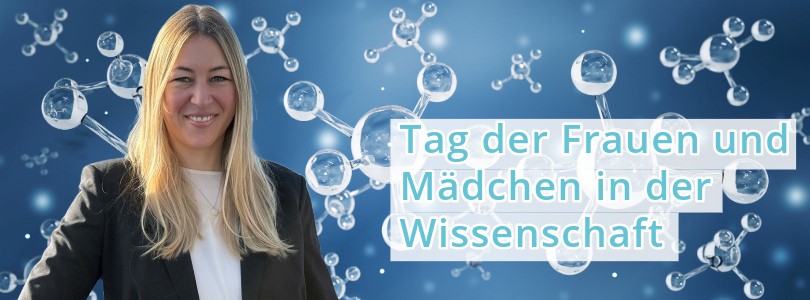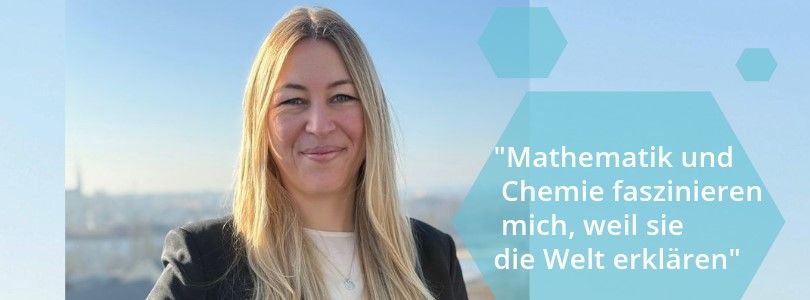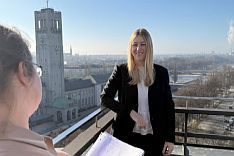Content
Women in Science

Explaining electrolysis simply - nothing could be easier
Explaining the electrolysis of water high above the rooftops of Munich? That's no problem for Katharina Karpis: “Water is split into hydrogen and oxygen using electricity.” On the occasion of the ![]() International Day of Women and Girls in Science, the PhD chemist explains what this is good for and what it has to do with her job.
International Day of Women and Girls in Science, the PhD chemist explains what this is good for and what it has to do with her job.
Electrolysis and six other specialist areas: That means staying flexible in your head
What can electrolysis be used for? “Hydrogen is a good energy carrier, so it can be converted into energy in fuel cells, for example,” reports Katharina Karpis. She has been working in patent examination at the German Patent and Trade Mark Office for around nine years and has six other areas of examination in addition to electrolysis cells. For example, the cleaning, removal and coating of metallic materials, also in terms of corrosion protection, such as steel strips, electrodes, wind turbine blades and components for aircraft technology, the automotive industry and the household.
"With seven different areas of testing, you have to keep your mind flexible, because you learn something new every day and need a great willingness to learn. But that's what I particularly enjoy," reports Katharina Karpis.
Unravelling things with maths and chemistry
Katharina Karpis has always found science exciting: ‘My parents, especially my mum, gave me an interest in it. There was no question for my parents that I should go to grammar school, even though they are not academics. Even though my primary school wasn't quite sure whether I was suitable for it.’ Things went very well at grammar school, especially in maths and chemistry: ‘Maybe it was also because I went to a girls’ grammar school and wasn't pigeonholed there.’

Dr Katharina Karpis: ‘Mathematics and chemistry fascinate me because they explain the world.’
Her interest in getting to the bottom of things eventually led her to study chemistry and biochemistry at LMU Munich, where she completed her Master's degree. She then completed her doctorate on hydrogen catalysers at the Max Planck Institute for Solid State Research. She received the ![]() Römer-Preis for her dissertation, as well as other academic prizes such as the ‘CeNS Publication Award’.
Römer-Preis for her dissertation, as well as other academic prizes such as the ‘CeNS Publication Award’.
Above the clouds to the patent office
How did she come to the patent office? ‘That was during my studies. On a flight to Athens, a patent examiner was sitting next to me (albeit from the European Patent Office). He told me about his work and it stayed with me. In the meantime, I kept looking at the job adverts at the German Patent and Trade Mark Office. A few of my colleagues had also thought about it and had already been to the DPMA.’
While still working on her doctoral thesis, she applied to the office: ‘I found the interview very positive. I still remember today that I was able to look at an examiner's workplace in my new department and ask a lot of questions. And so, although I never met my colleague from the European Office again, I am very glad that this encounter ultimately led me to the DPMA.’
Passing on enthusiasm for science
In addition to examination work, the office also has other exciting tasks, such as training patent attorney candidates, organising training courses and supporting trade fairs. From time to time, groups of visitors and school classes come to the office to find out about the protection of intellectual property. ‘I particularly like the fact that we are once again taking part in the nationwide Girls' Day this year. Girls can get a taste of the topic of ‘invention protection’. And perhaps this will give one or two of them the opportunity to study chemistry, mechanical engineering or another scientific or technical subject and become my colleague in a few years' time. I would be very happy about that.’
Pictures: DPMA
Last updated: 10 December 2025


Not only protecting innovations
Social Media